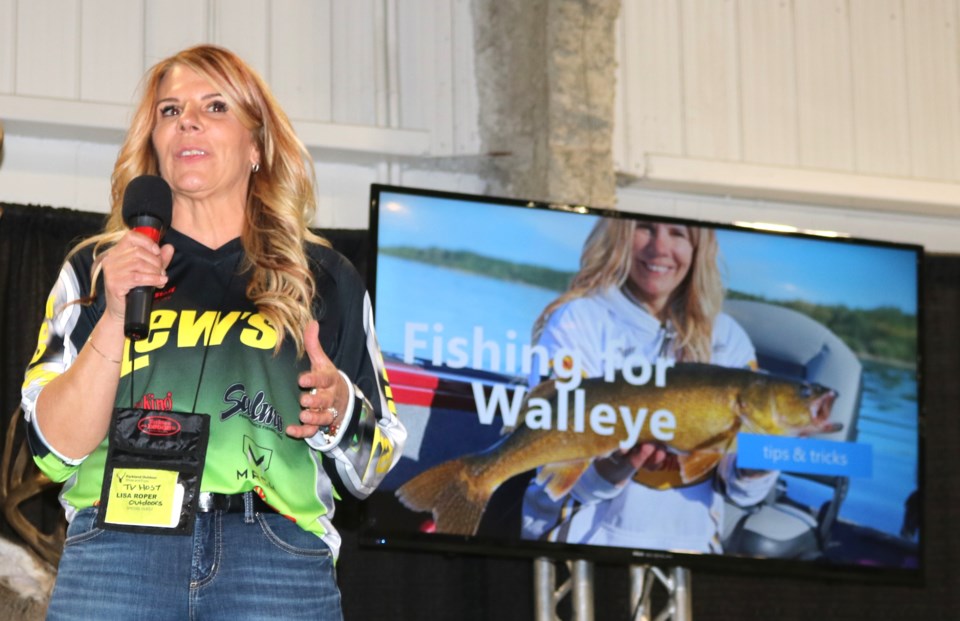YORKTON - When you fish in Saskatchewan you are likely hoping to hook into a big walleye.
Some days the fish co-operate, and others they seem to have little interest.
But knowing the fish, and some varied techniques can help, even on those slow days, offered Lisa Roper during a presentation at the Parkland Outdoor Show in Yorkton Saturday.
To begin Roper, best known for her show Lisa Roper Outdoors, said there are three feeding patterns in walleye.
A positive feeding pattern is when walleye are actively hunting for food.
“You can pretty much throw the kitchen sink out and they’ll bite,” said Roper.
A negative feeding pattern is when the fish just are not interested.
“Nothing seems to work,” said Roper.
And a neutral pattern is when fish aren’t exactly hunting, but might be interested if the situation is right.
Roper said it’s the fishermen’s job to turn the latter two patterns into “a positive feeding pattern.”
That process begins with how someone fishes a body of water.
“I like to let the fish tell me what technique to use,” said Roper.
Roper said she uses five techniques, trying different ones depending on lake and feeding conditions. Those are vertical jigging, power jigging, casting, trolling and bottom bouncing. Each has its place depending on the situation.
For example, trolling allows one to cover a large area of a lake.
“It’s a great way to cover a large amount of water rather quickly,” said Roper, later adding it’s a great technique “when they’re scattered throughout the water.”
Trolling can allow varied hook use too.
“You name it, I’ll troll with it,” offered Roper.
When trolling you can use boat speed as a tool as well.
Roper said if fish are being lazy and not particularly aggressive “slow your speed down.”
Casting allows one to target specific areas, for example along the edge of a weed bed where walleye often hang out waiting for bait fish to come out of the weeds.
When casting Roper said she typically uses spoons and swim baits.
Bottom bouncing allows the fisherman to disturb the lake bottom, a way to catch the attention of fish, and is a “go-to in spring,” said Roper.
Conditions factor in too.
“When it’s really light out use a lighter hook,” said Roper.
By contrast darker days mean darker hooks.
Roper said “when nothing else is working” that is when power jigging is her go-to, particularly in July and August when oxygen levels are down in the water, and water temperatures are higher, which slow fish and send them to deeper, cooler water.
“So, basically they get lazy,” she said.

